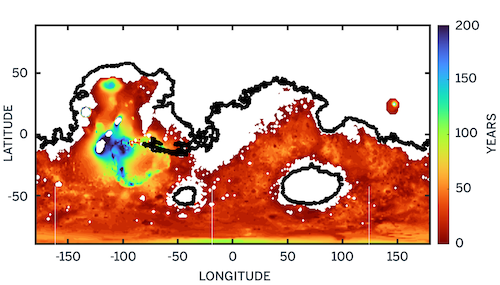Billions of years ago, water flowed on the surface of Mars. But scientists have an incomplete picture of how the Red Planet’s water cycle worked.
That could soon change after two graduate students at The University of Texas at Austin filled a large gap in knowledge about Mars’ water cycle — specifically, the part between surface water and groundwater.
Mohammad Afzal Shadab and Eric Hiatt developed a computer model that calculates how long it took for water on early Mars to percolate from the surface down to the aquifer, which is thought to have been about a mile underground. They found that it took anywhere from 50 to 200 years. On Earth, where the water table in most places is much closer to the surface, the same process typically takes just a few days.
The results were published in the journal Geophysical Research Letters.


